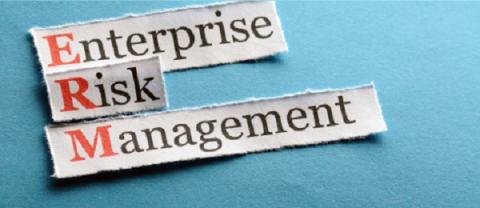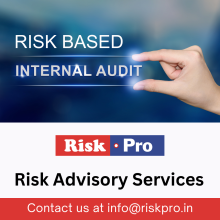Enterprise Risk Management

What is Enterprise Risk Management?
Committee of Sponsoring Organizations of the Treadway Commission (COSO) defines ERM as:
Enterprise risk management is a process, effected by an entity’s board of directors, management and other personnel, applied in strategy setting and across the enterprise, designed to identify potential events that may affect the entity, and manage risks to be within its risk appetite, to provide reasonable assurance regarding the achievement of entity objectives.
Enterprise risk management requires an entity to take a portfolio view of risk. It considers activities at all levels of the organization.
ERM NEEDS AND BENEFITS
A good business knows well that there is nothing like closely monitoring business and financial risks and implementing mitigation plans and risk management strategies based on data measures. Risk Management is an effective tool for managing the uncertainties resulting from various business risks. Many of these business risks go beyond traditional risk that can be insured. In today’s business environment, not all risks can be insured. Infact, some risks are better retained within the business and managed for better returns.
WHY ERM
In August 2004, Committee of Sponsoring Organizations (COSO) issued its Enterprise Risk Management – Integrated Framework after completing. The framework, which includes an executive summary and application techniques, expands on the Internal controls framework.
HOW RISKPRO CAN HELP
ERM framework Development - Riskpro helps organizations design and implement ERM frameworks aligned with international standards.
Risk Identification and Assessment - Sessions with key stakeholders to identify and prioritize risks.
Policy and Governance and regulatory Support- ensures that the ERM process complies with industry and regulatory requirements.
Risk Awareness and Employee Training- Conducts training sessions to improve risk awareness.
Cost-Effective Outsourcing- which can be particularly beneficial for small and medium enterprises with limited internal resources.
To know more about our Enterprise Risk Management advisory, please contact us at info@riskpro.in
FAQs
1. Why is ERM important?
- ERM helps businesses anticipate and deal with risks before they become major problems, safeguarding against financial losses, and helping the business to stay on track.
2. What are examples of risks in ERM?
- Risks in ERM can include financial risks (like market fluctuations), operational risks (like equipment failure), strategic risks (like competition), and compliance risks (like regulatory changes).
3. How does ERM impact decision-making?
- ERM provides decision-makers with better information about potential risks, helping them make more informed decisions.
4. How do you prioritize risks in ERM?
- Risks are typically prioritized based on their potential impact on the business and the likelihood of them occurring.
5. How does ERM work?
- ERM involves identifying risks, assessing their potential impact, and implementing strategies to mitigate or manage those risks.















